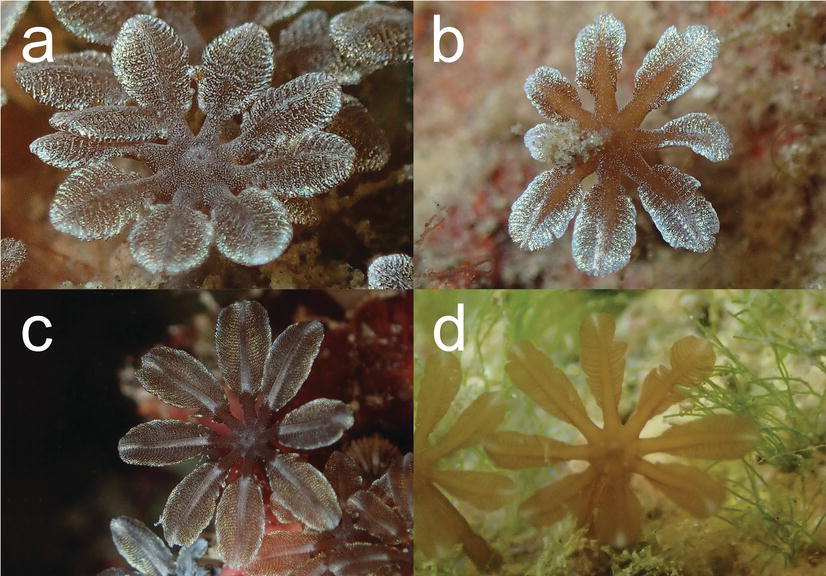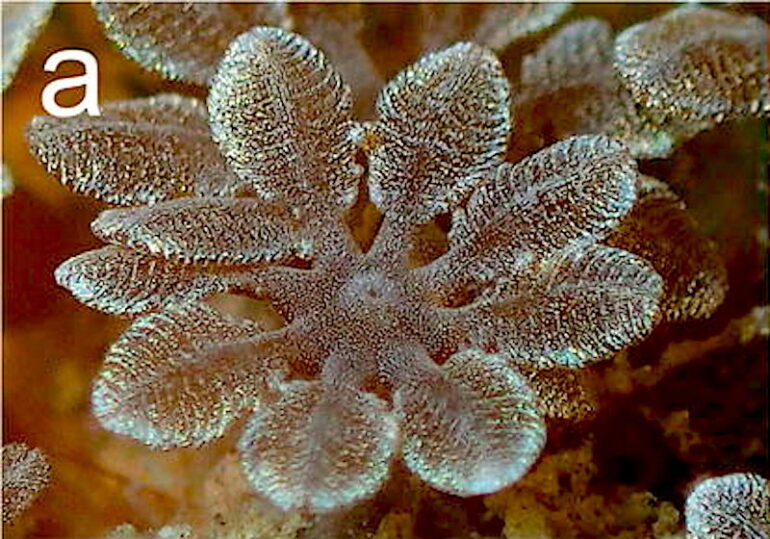Octocorals are a very diverse group of reef animals which include many different families, including the tiny and encrusting Stoloniferans that are very easy to overlook. Today a new genus and species of Stoloniferans gets recognized with the official description of Hanabira yukibana from the islands of southern Japan.
Hanabira polyps are broadly related to clove polyps and while they display a diversity of morphology, the shape of the polyps is pretty consistent. One of the details that links H. yukibana together is their broadly flower-petal shaped tentacles which have fused pinnules, or pseudopinnules, somewhat similar to daisy polyps of the Knopia genus to which they are closely related.

The type specimens for Hanabira yukibana were collected at typical scuba depths of 10-35 meters or 30 to 120 feet with SCUBA at the southern Japanese Islands of Okinawa and Iriomote. The colonies of Hanabira encrust the typical hard substrate and the teeny tiny 2-3 mm diameter polyps demonstrate a light green, gold or white sheen, regardless of the basal coloration.
The newly described Hanabira yukibana are a definite curiosity and remind us of the equally small and odd Nanipora polyps also described from Japan, but known to occur elsewhere. If you’ve got good vision, or a mesoscope, take a good look at your reef tank for encrusting tiny polyps and if they match the description, especially the fused pinnules and interesting sheen, there’s a chance you might already have Hanabira polyps in your reef tank. [Marine Biodiversity]



